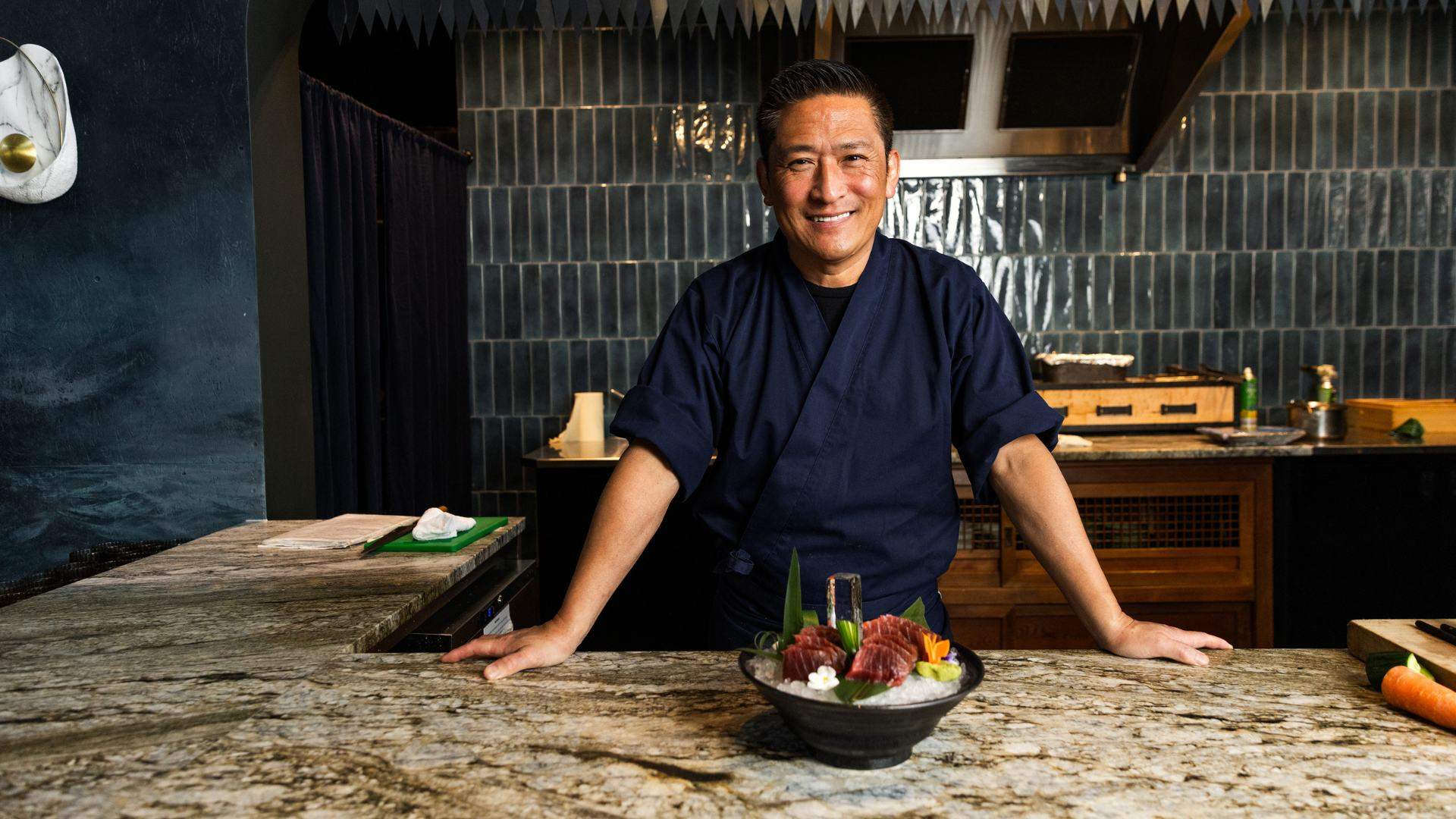
ŌRA Executive Chef Nobuyuki Ura on His Unique Take on Omakase
"The most important thing is to execute each dish without compromise."
Paying homage to the art of Japanese cuisine, ŌRA blends traditional techniques with contemporary influences. At the heart of every dish is Executive Chef Nobuyuki Ura. Every dish tells his story. Chef Ura has worked in kitchens across Japan and Australia, from cooking for the Japanese royal family to serving dishes to a former Japanese Prime Minister. ŌRA is his new home, celebrating the past and honouring the present.
ŌRA is a collection of venues inside one retrofitted industrial warehouse in Waterloo. Three experiences are on offer here. The central bar with chic velvet booths is where guests can enjoy a fusion of Western and Eastern tastes from a sushi menu that draws elements from across the Japanese spectrum — expect classic street food and steamed and braised dishes alongside charcoal-grilled veggies, seafood and meats. Then there’s the So She Me cocktail lounge and event space where guests can enjoy Japanese-inspired beverages.
Omakase is enjoyed at the Chef’s Counter, an intimate setting with only ten seats at the rich marble bar. Omakase literally translates to ‘I’ll leave it up to you’ — it’s a culinary performance where diners can witness the skills of the chef as each dish is carefully created and presented to the trusting guests. Each month, a new menu is created by Chef Ura, showcasing the freshness and seasonality of the produce.
Highlighting the very best Australian produce, the menu at ŌRA sits alongside a beverage offering that includes seasonal cocktails, artisanal sake from new-generation makers and a wine list with Japanese wines. Accompanying this offering is, for the month of November only, a complimentary martini made with Haku Vodka — a craft spirit from the House of Suntory. Together with Haku, we sat down with Head Chef Nobuyuki Ura to chat about honouring his past and respecting the present.
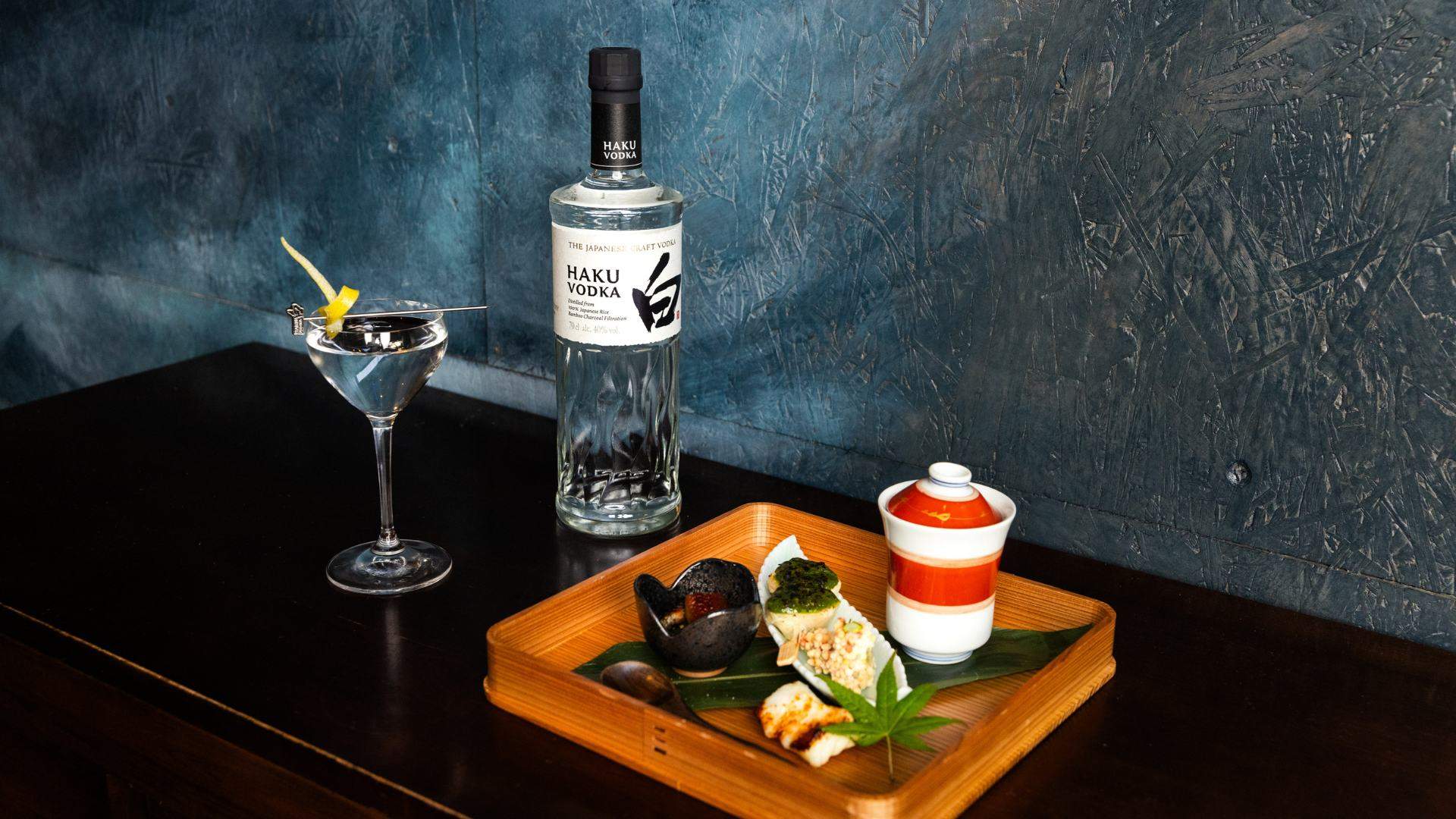
THE JOURNEY TO ŌRA
What was your journey to being executive chef at ŌRA?
“It seems I have always been working. I began my apprenticeship at age 18 at Meguro Gajoen, a small luxury hotel in Tokyo. I trained hard in Japan for eight years before coming to Sydney in 1989. I worked as sous and head chef at Restaurant Suntory Sydney from 1989 to 1997. Then, I moved to Kamogawa and worked as the executive chef there from 1997 to 2006. Then, I was executive chef at Sushi e from 2006 to 2017, gaining a hat and maintaining that standard the entire time I was there.
I also had my own catering and consulting business from 2017 to 2020 before I joined Winning Group as a culinary ambassador in 2020 with the intention of opening ŌRA. We officially opened ŌRA in January 2022. It has been an incredible journey. I have learned a lot.”
Where did your own passion for cooking come from?
“My passion for cooking came from my childhood. My father and grandfather cooked for the family. So, cooking for others was instilled in me from a young age. I grew up near the sea, so there was always fresh fish.”
You clearly bring your passion into your work. ŌRA has received critical acclaim. What’s the best kind of feedback you love to receive?
“When Japanese customers say my food is better than what they eat in Japan, that makes me very proud. In 1997, former Japanese prime minister Yasuhiro Nakasone visited Sydney, and I made his food at Kamogawa restaurant. He said my food is better than the high-end restaurant in Ginza, Tokyo.”
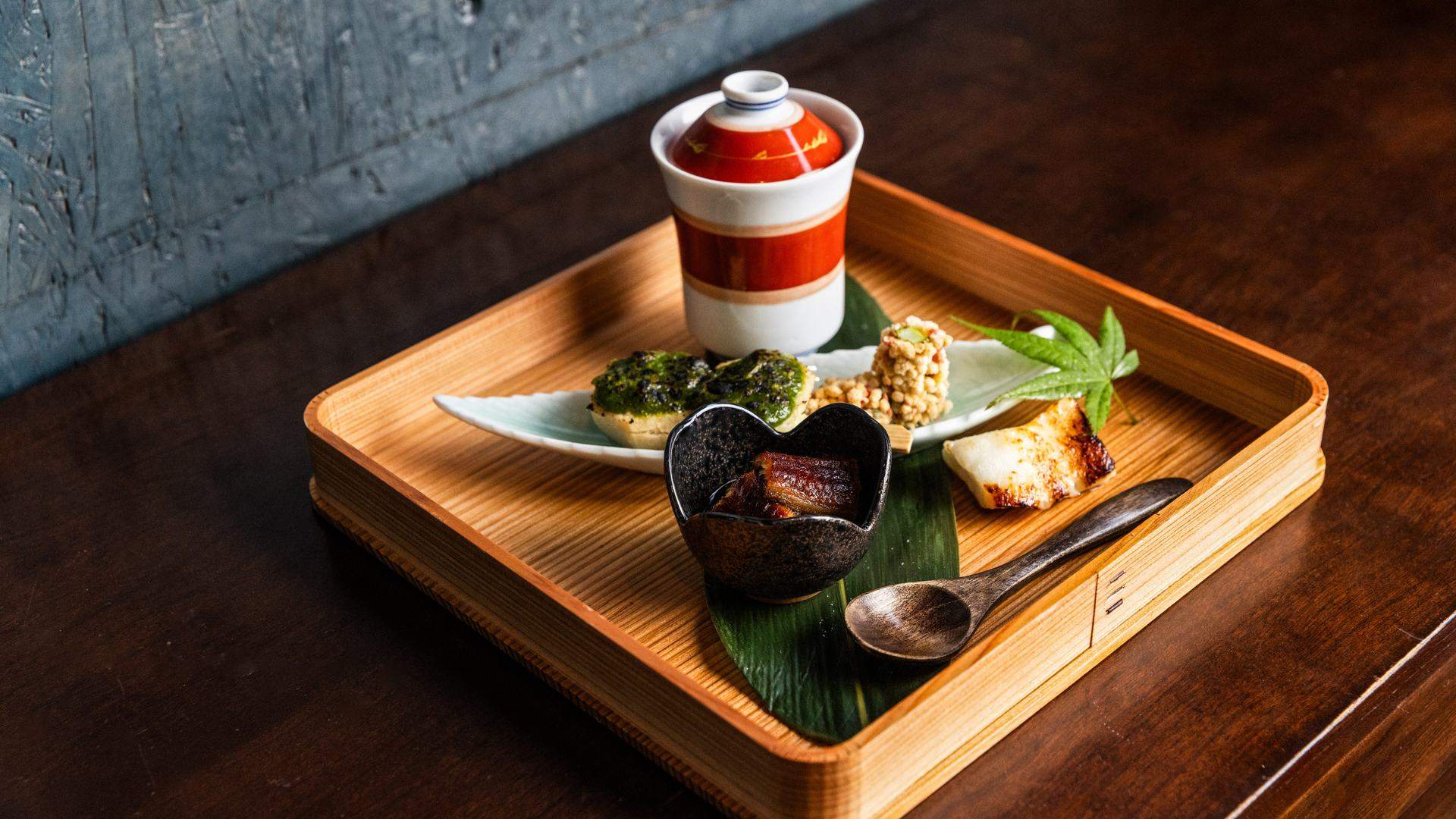
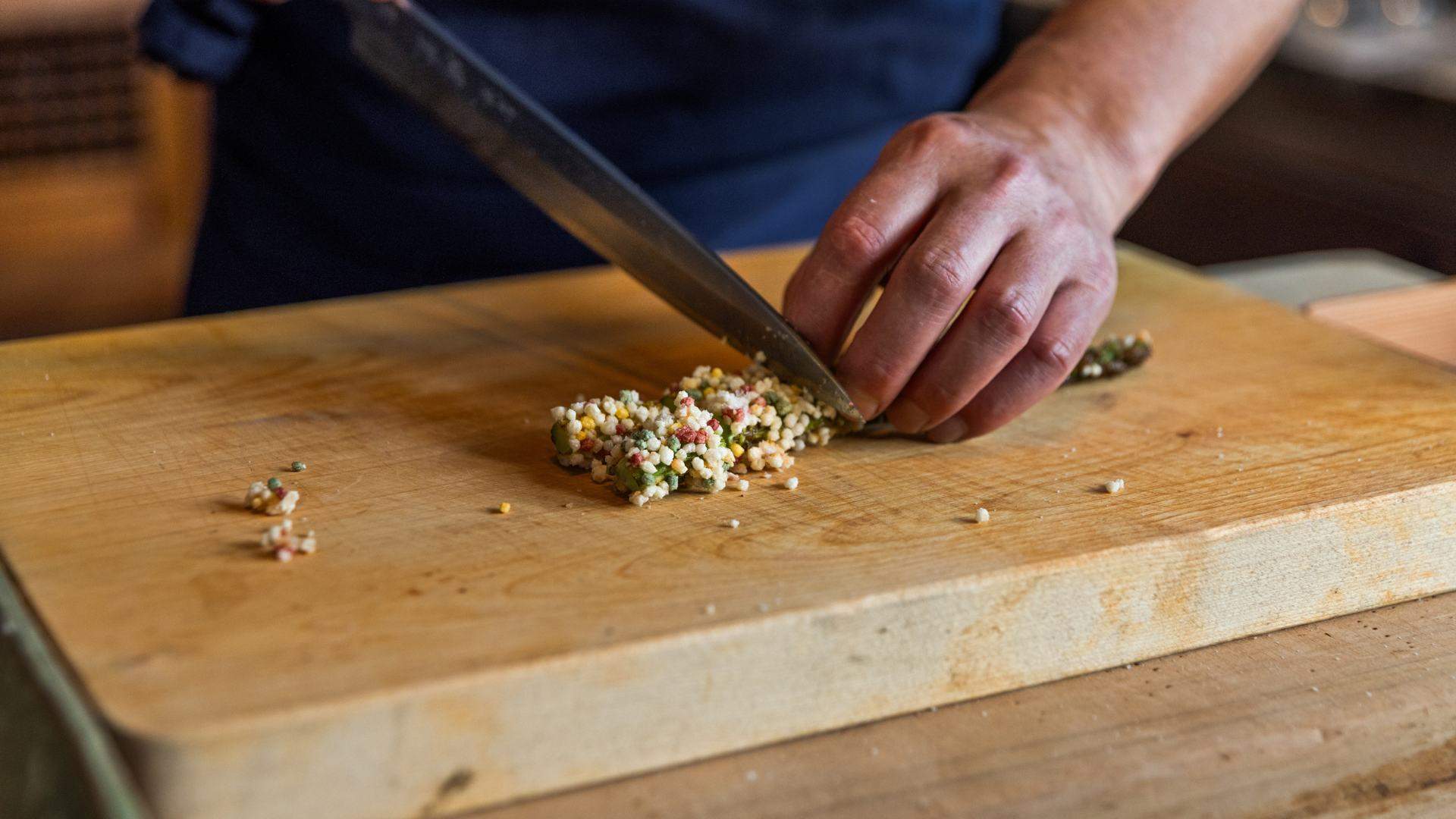
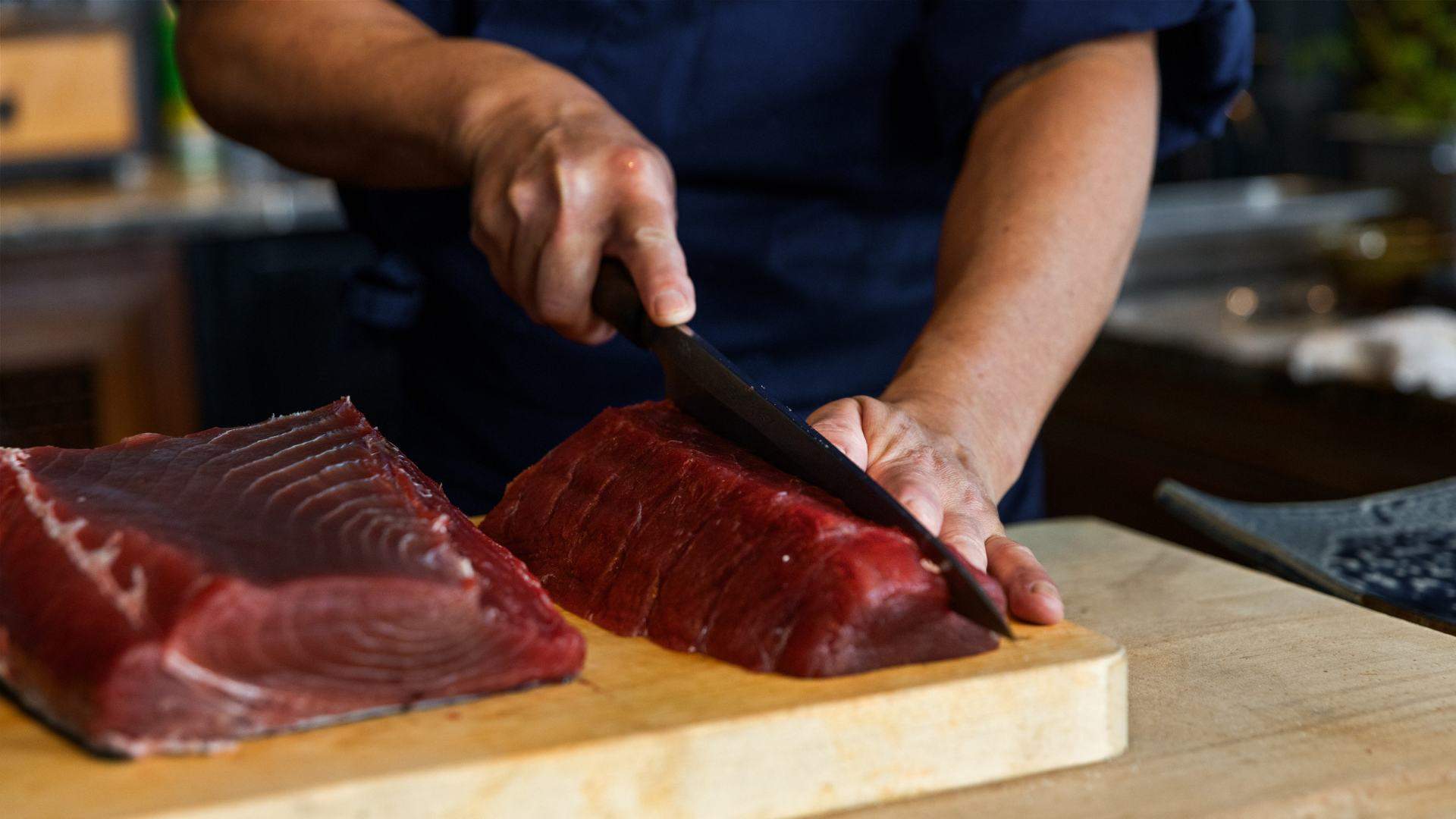
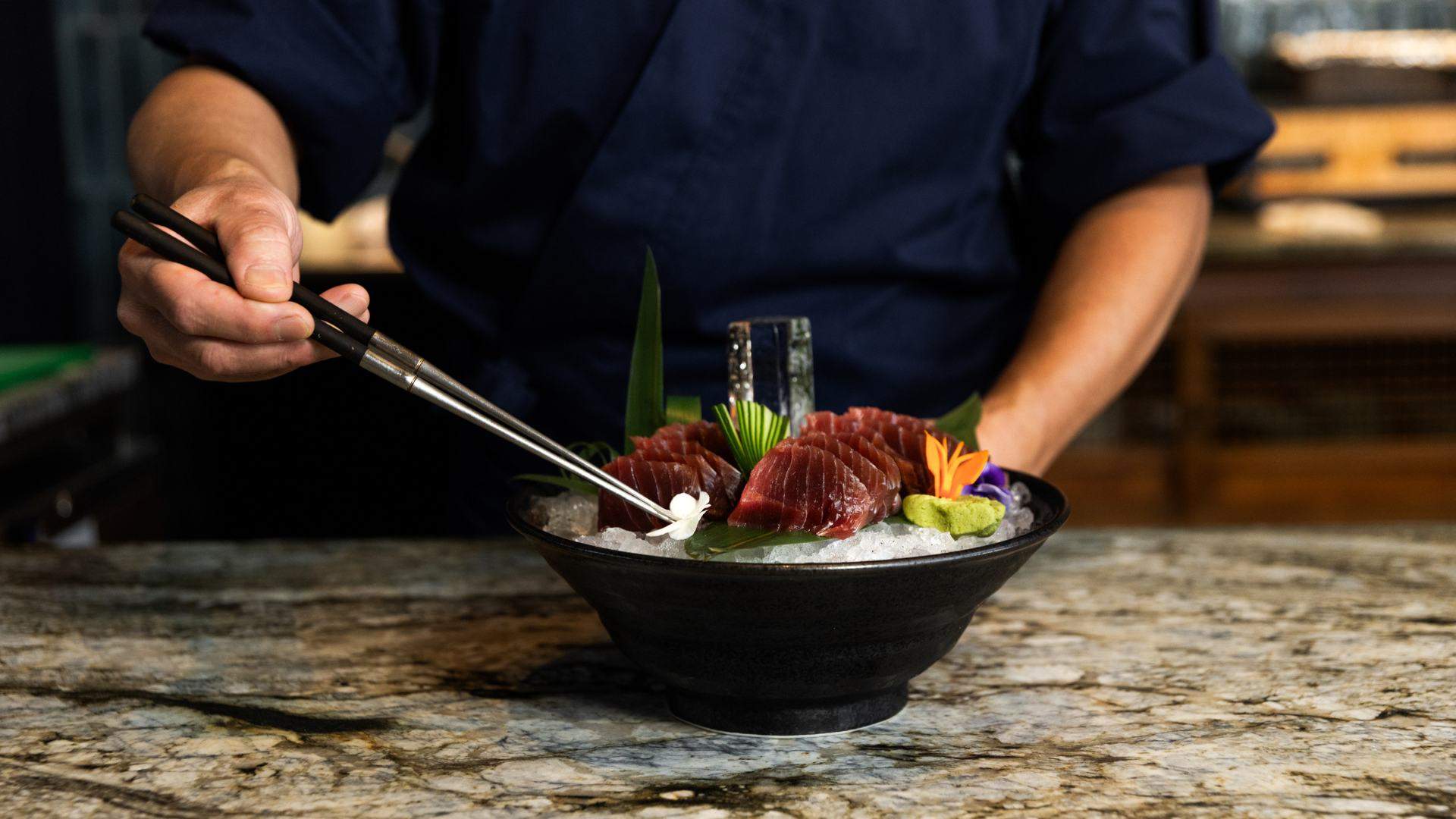
CRAFTING COMPLEX CREATIONS
Omakase is the perfect opportunity to showcase your skills to your guests. Could you share your process for selecting courses, sourcing and choosing ingredients?
“I always maintain close relationships with our suppliers to use the best seasonal Australian ingredients. I also check the fish and fresh produce markets often. I base the menu on what produce is in season. That is where it begins.”
Talk me through the hassun, the first dish in the omakase dining experience. Each small dish is intricate, such as the foie gras chawan mushi. What was your goal in creating this first-course dish for your diners?
“There is a Japanese proverb: ‘Eat food with your eyes.’ I think the most important thing in hassun is to express the sense of the season. I feel we have captured that with this dish.”
Do you have a favourite course to prepare for the nine-course meal? What’s your favourite to eat?
“Hassun is my favourite, as it sets the tone for the evening. I just love fresh seafood.”
What is the most challenging or complex dish you’ve ever created for ŌRA, and what inspired it?
“The most challenging was the A5 wagyu sukiyaki paper pots (on June and July’s omakase menus). It was very intricate. I created individual paper pots for each diner. We would set a light underneath each pot, which simmered the vegetables and wagyu in the broth in front of the customer. It was inspired by traditional kaminabe.”
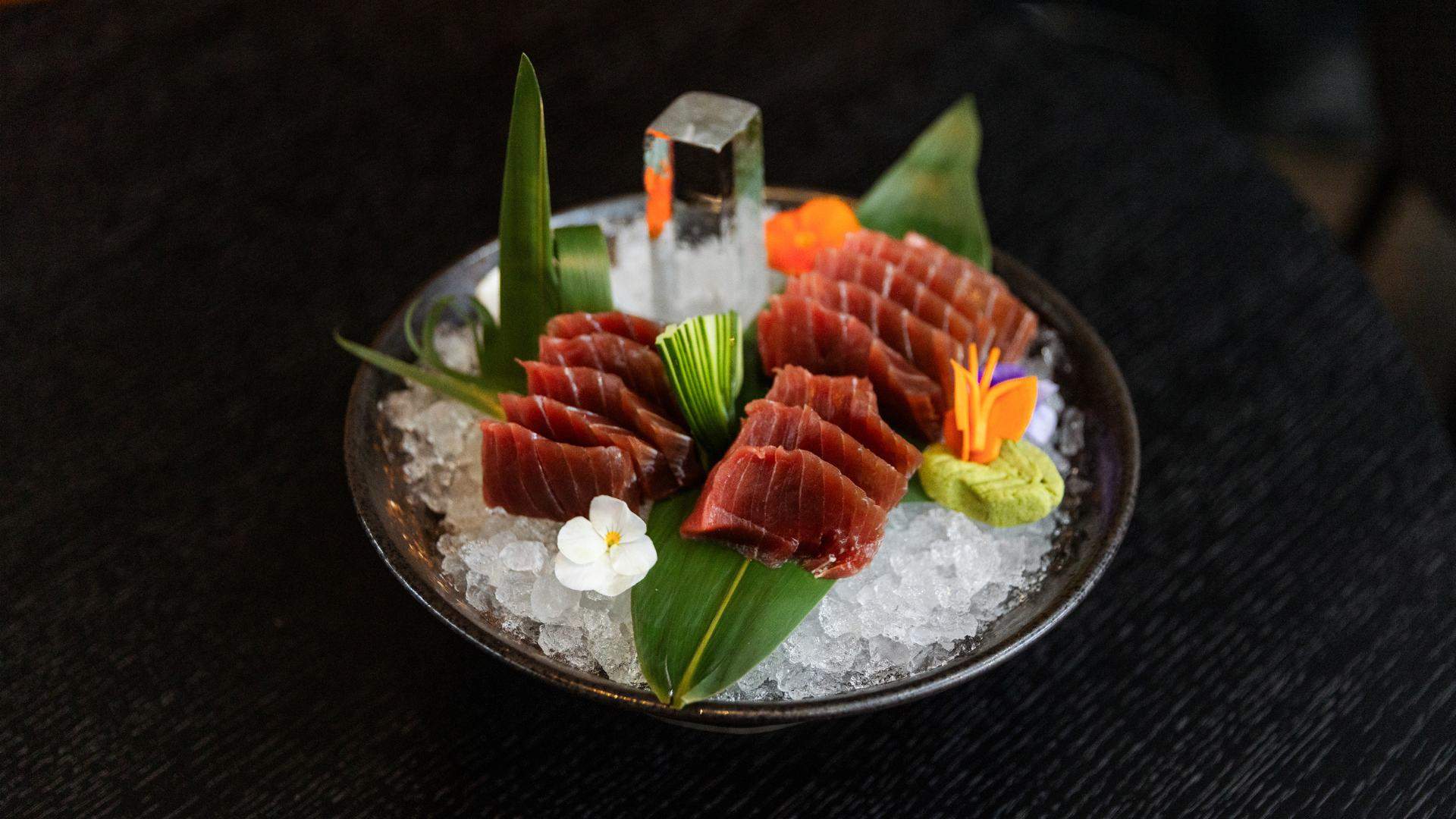
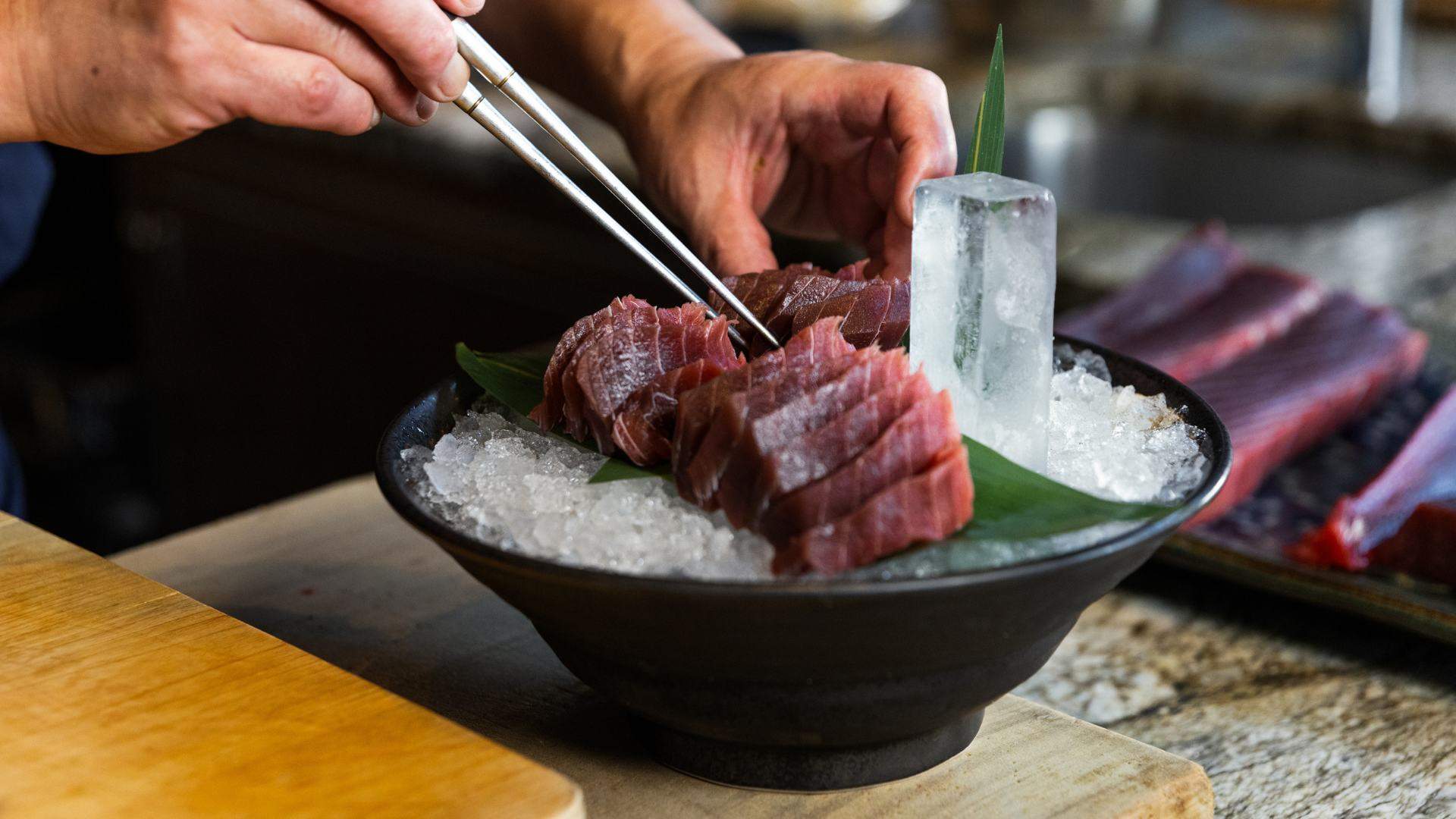
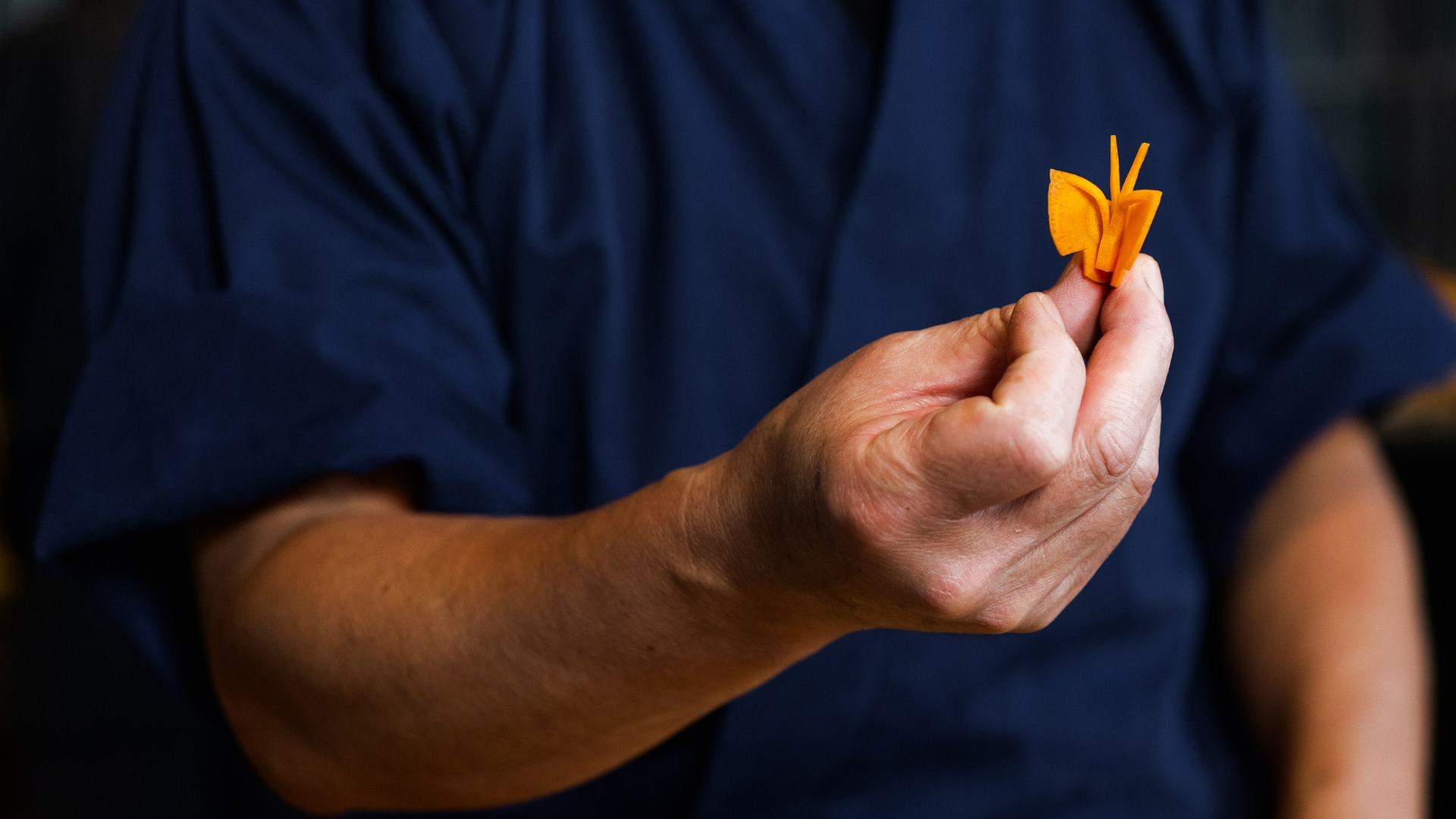
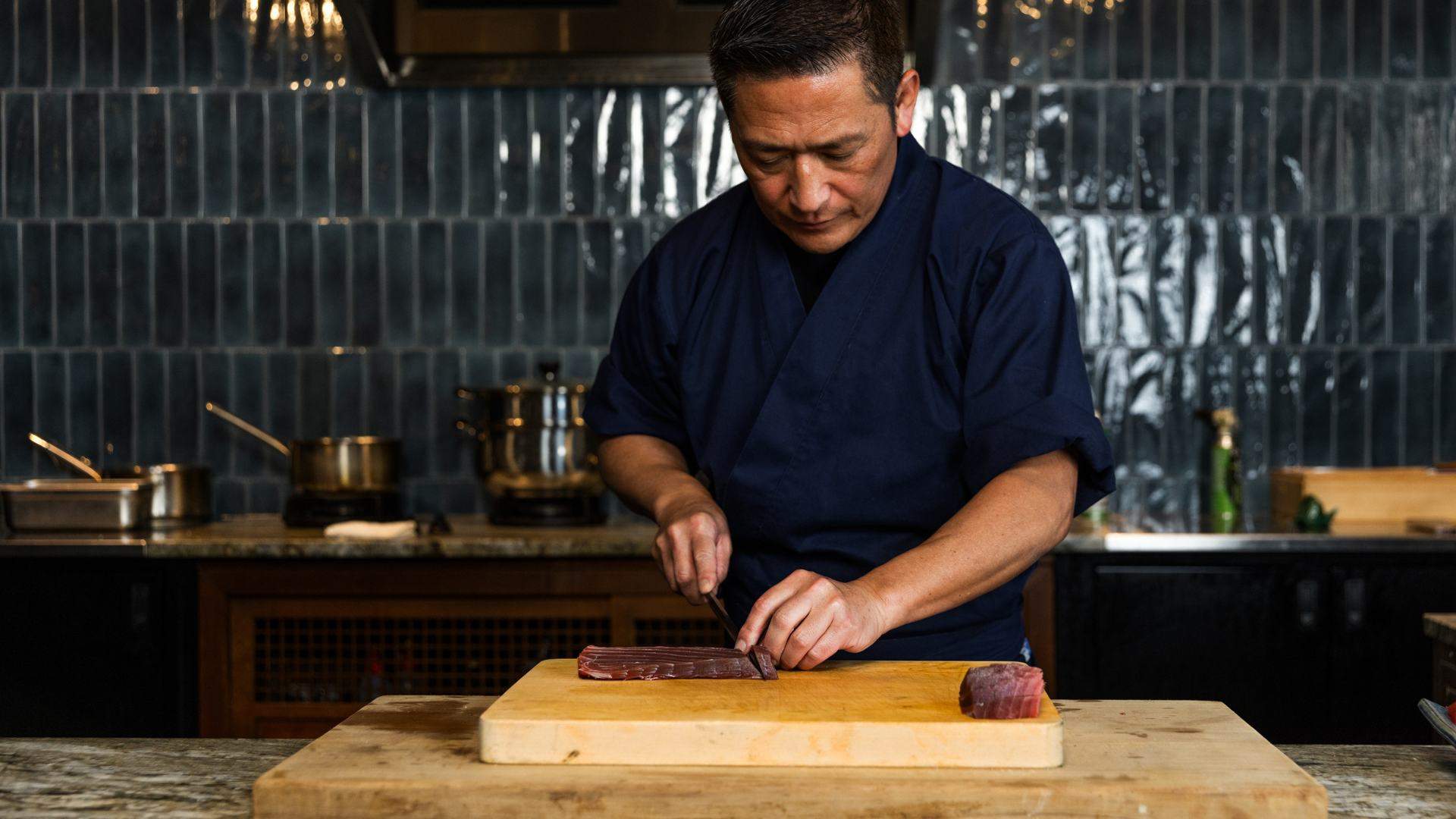
STEEPED IN TRADITIONAL PRACTICES
Japanese culinary practices are deeply rooted in culture and history. How do you incorporate these traditions into your omakase menus while adding your own unique twist?
“Our omakase is a kaiseki-style event and includes nine courses. Kaiseki cuisine is based on one soup and three side dishes, such as hassun, otsukuri and nimono. We added sushi, yakimono, agemono and dessert.
I always incorporate three key ingredients in my menus: fresh seafood, fresh meat and seasonal vegetables. I cook the ingredients using traditional techniques I have learned throughout my career.”
Japanese cuisine is known for its precision and attention to detail. How do you ensure that every dish at ŌRA reflects this level of craftsmanship?
“A kaiseki kitchen has at least six or seven positions. If you can’t do each position perfectly, you won’t be able to progress to the next stage of the dish.
In order to reproduce what I have experienced in the past, I prep myself every Tuesday morning to maintain a high standard and consistency. The most important thing is to execute each dish without compromise.”
Omakase experiences often involve interaction between the chef and diners. How do you engage with guests and enhance their dining experience in this intimate space at ŌRA?
“I make each item with all my heart. I avoid talking too much unless the customer asks me a question so I can focus. I believe in allowing them to be immersed in the food, but I have spent many years cooking for different types of people across all walks of life, so I am comfortable entertaining when necessary. Some are nervous at first, but by the time they leave, everyone is smiling.”
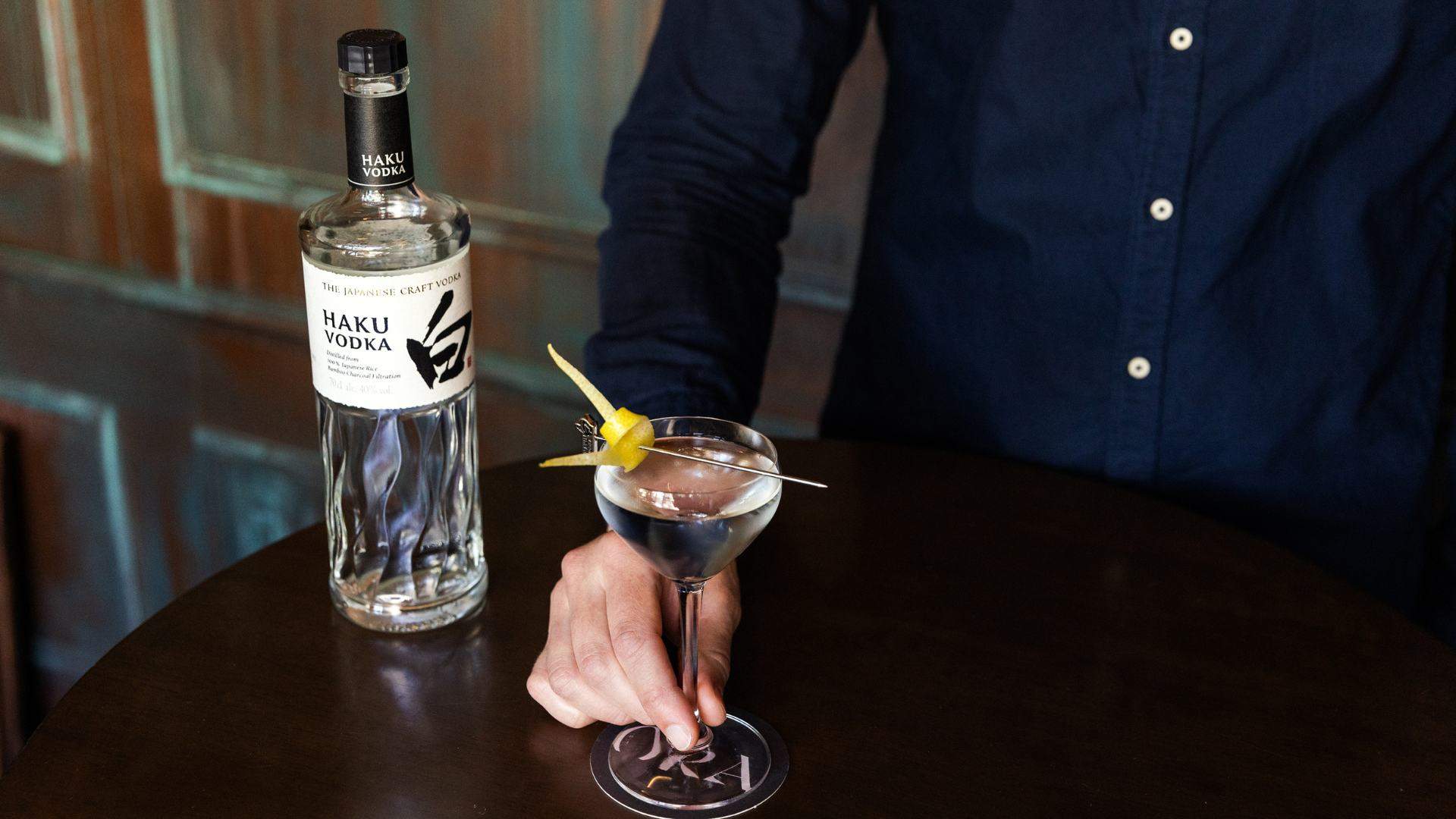
BARLEY BREEZE PLUM MARTINI
Alongside the Hassun dish, for the month of November, guests will be able to enjoy a complimentary Haku martini crafted by the ŌRA team. Bar manager Basile Jourdan — originally from Brittany, France — has been working at ŌRA since its opening. Previous stints for Jourdan include Dandelyan in the UK (which won best bar in the world under his watch) and local watering holes Charlie Parker’s and Mimi’s.
“The idea behind the creation of this martini was to support, in the best manner, the cuisine, adjusting the ingredients towards the main event: omakase,” says Jourdan.
“We played with traditional Japanese spring flavours to create something that is light and citrusy — like a palate cleanser. When you arrive, you can forget your long day and start your meal the best way possible. It is a true reflection of our welcoming manner.”
Every element of the martini speaks to Japanese flavours and ingredients and how they lend themselves to Haku Vodka.
“Shochu is the go-to type of neutral spirit in Asia, mainly in Japan,” explains Jourdan. “It is a traditional spirit made of barley.”
“We added some dryness with the plum bitters, Baijiu fortified wine and verjus. Think of it as a spring martini — like a gimlet with light citrus flavours upfront and lingering roasted barley on the secondary palate.”
Ingredients:
45ml Haku Vodka
20ml Kenjo Kofukuro shochu (roasted barley)
5ml Clarified citrus
5ml Sugar syrup
Two dashes of fermented plum bitters
Method:
Add 20ml of Kenjo Kofukuro shochu and 45ml of Haku Vodka to a mixing glass. Add two dashes of fermented plum bitters, 5ml of sugar syrup and 5ml of clarified citrus. Add ice and stir until combined. Strain into a chilled Nick and Nora glass and garnish with an origami lemon peel speared with a Haku pin.
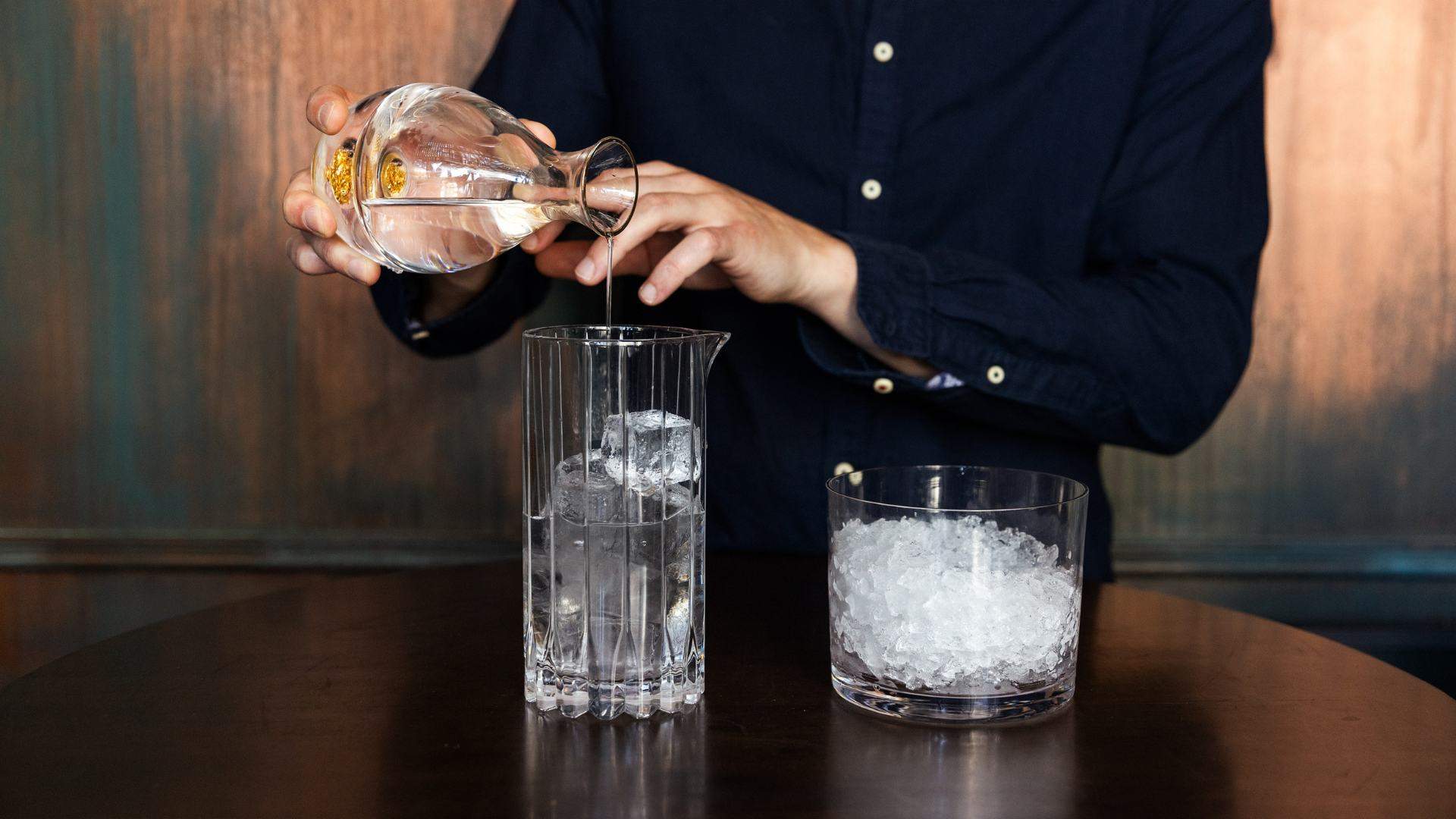
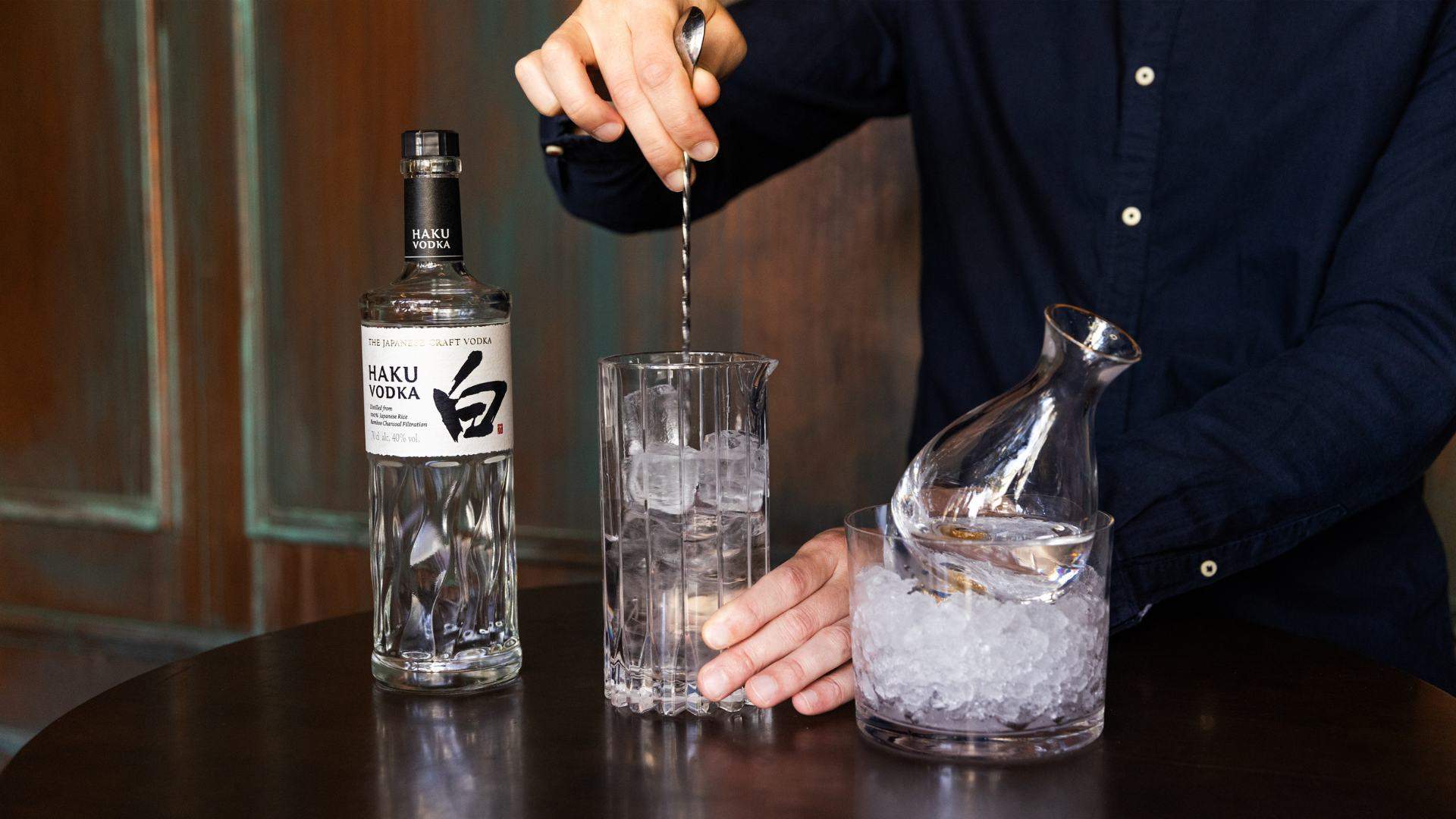
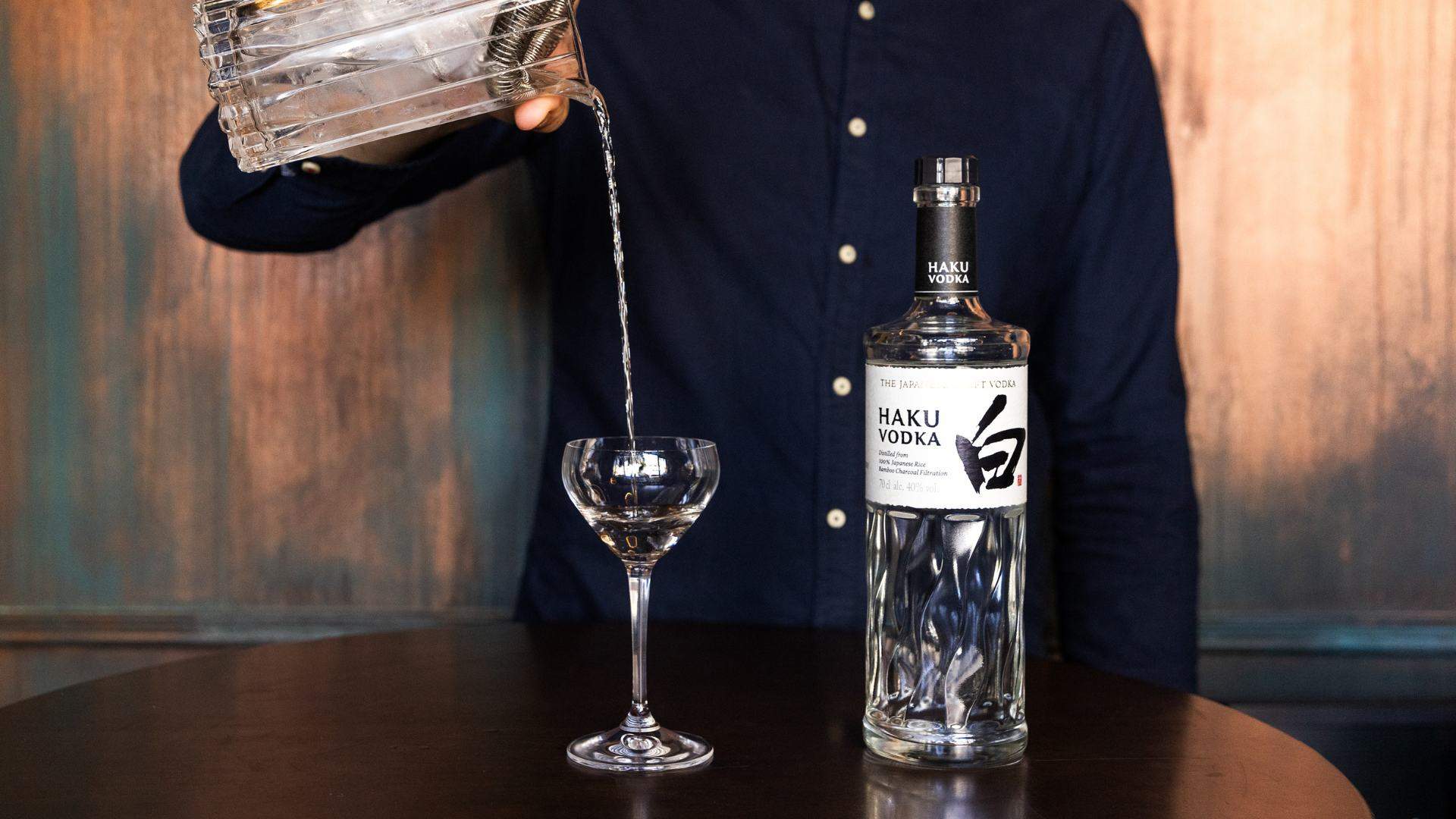
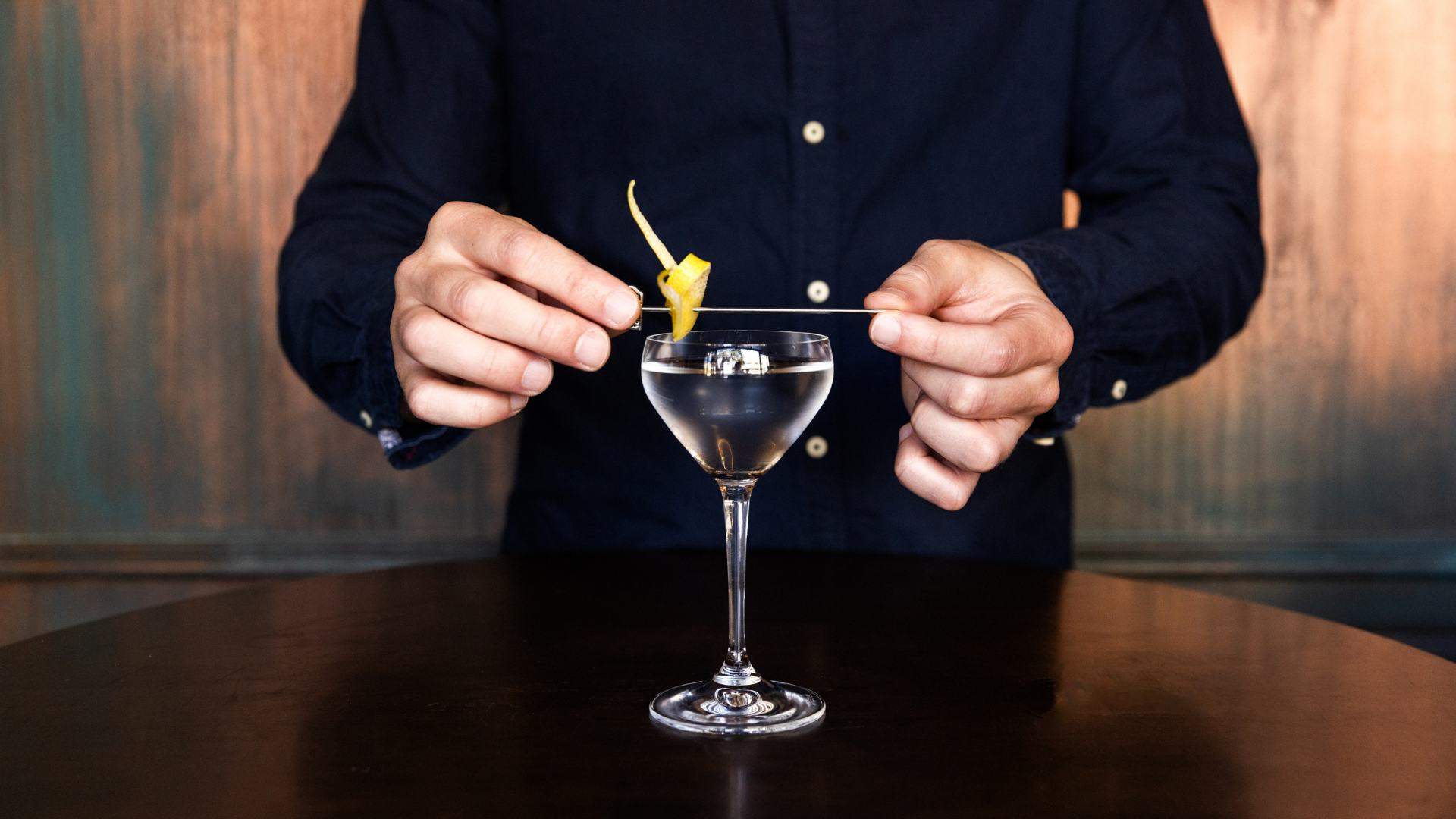
ŌRA is serving its Barley Breeze Plum Haku martini with its omakase menu from Wednesday, November 1, until Sunday, December 3.
Haku Vodka’s signature serve is the Haku martini — a drink that showcases the craftsmanship, nuanced flavour and exceptional quality of the premium Japanese liquid. To learn more, head to the House of Suntory website.
Images: Brooke Zotti